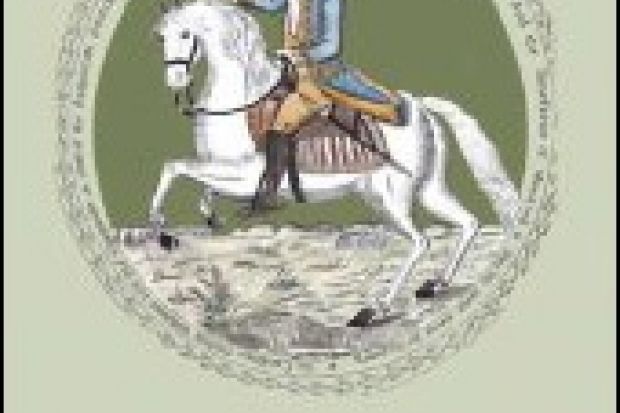It seems rather ironic that since he retired from full-time politics, Kenneth Baker has been forging a second career as an authority on political cartoons and caricature. He is probably best remembered today not so much for his 1988 Education Reform Act and the introduction of the national curriculum as for his depiction as a slimy snail in the television series Spitting Image. He was also the butt of a journalist's cruel jibe: "I have seen the future and it smirks." The most celebrated user of Brylcreem since cricketer Denis Compton and Pink Floyd's Syd Barrett, he never shook off the smoothie image.
These taunts must have hurt, but perhaps Lord Baker's experience as a victim helped to make him the confident connoisseur of the art of caricature that he is today, and the regular appearance of books he has written on this subject suggests he is reaching a wide audience.
The illustrations in this volume are a delight; many are in colour. Some of these cartoons, prints and paintings are familiar, but others have been published for the first time since their initial appearance, sometimes rediscovered by the author himself. They provide a vivid chronicle of the American War of Independence.
Baker uses these images to illustrate the slide to war from the early 1760s, its outbreak and progress from year to year, its distinctive features in different parts of the North American continent, its generals and its armies, and its resolution in the early 1780s. What is striking is the sympathy for the American cause that shines through so many of these prints.
There were few engravers in America, and, as the author suggests, in any case satire perhaps did not come easily to those fighting for their lives and freedom, but British printmakers had little compunction about savaging George III and his ministers and generals. The King, Lord North and other royal officials are repeatedly lampooned in these artefacts, while George Washington, despite the book's title, appears only occasionally, and then in a respectful manner. Baker has discovered some American (and indeed French) prints, but it is the many British depictions of the war that give real value to the book, although in some cases more detail on their provenance would have been helpful.
Gauging "public opinion" in the 18th century is no easy matter, although it is clear from these illustrations that many Britons shared with the Americans the view that they had inherited English liberties that the King's ministers were bent on denying. Arousing particular ire during the war years was the use by the British of Native American "savages", as well as French allies and German mercenaries, against those who could be seen as fellow British subjects. More than many American histories, too, this book through its illustrations points to the importance of the French, Spanish and Dutch as allies of the Americans. In particular, the great victory that ended the war at Yorktown in 1781, the subject of a beautiful French print, was really a French triumph - there were 25,000 French soldiers and sailors alongside just 5,000 Americans.
Baker's generals, including Washington, are mostly a cautious lot, and he is relatively unforgiving of their failings. British generals such as William Howe are repeatedly criticised for failing to follow up the advantages that periodically came their way and administer a knockout blow to Washington's army.
Failings there doubtless were, although Baker appears not to consider the limited nature of the intelligence available to these military leaders. Armchair generals may have the benefit of hindsight, but historians should beware of assuming that their subjects could anticipate the future.
The author may be forgiven his stabs at contemporary relevance, as when the Boston Tea Party is presented as an early outcome of globalisation, the toppling of a statue of George III in New York inspires a reference to Saddam Hussein, and Native Americans fall victim to "ethnic cleansing".
More seriously, the text does not match up to the quality of the pictures. Occasional mistakes creep in, such as citing the elder Pitt as Prime Minister in 1762, while on one page Washington becomes US President in both 1787 and 1789 (it was the latter).
Given the lavish production of the volume and the gorgeous quality of the prints, one would have hoped for the publishers to undertake more careful proofreading of the text. The colonies are referred to as "states" three years before the Declaration of Independence, the word "jealousy" twice appears as "jealously", "singled" confusingly replaces "signalled" at one point, and "adequate" makes nonsense of a sentence in which "inadequate" was meant. The 18th-century engravers whose skills are so handsomely on display here deserve a better finished product.
George Washington's War: In Caricature and Print
By Kenneth Baker
Grub Street, 224pp, £25.00
ISBN 9781906502539
Published 31 October 2009
Register to continue
Why register?
- Registration is free and only takes a moment
- Once registered, you can read 3 articles a month
- Sign up for our newsletter
Subscribe
Or subscribe for unlimited access to:
- Unlimited access to news, views, insights & reviews
- Digital editions
- Digital access to THE’s university and college rankings analysis
Already registered or a current subscriber?
